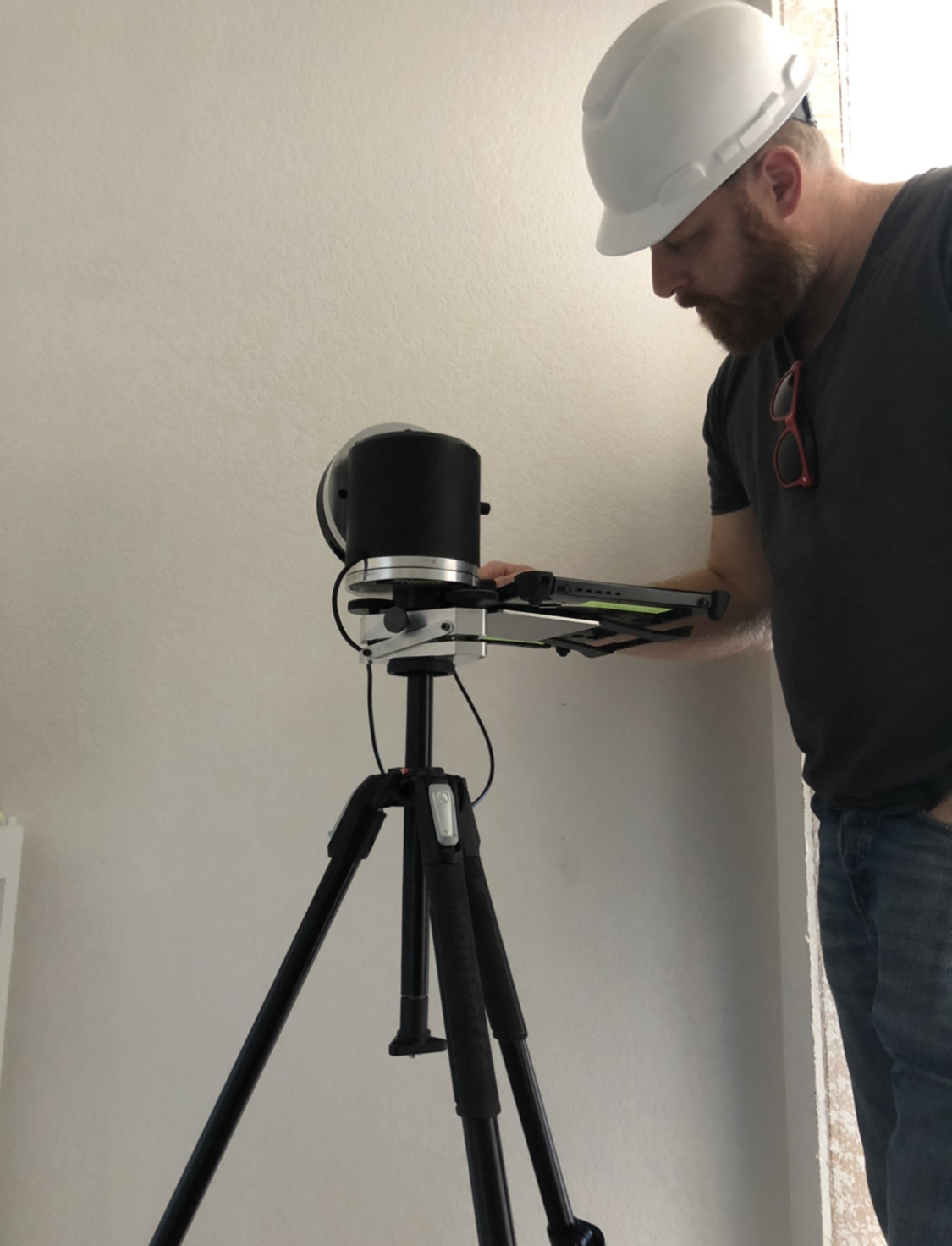This game-changing technology sets a unique pathway to a lucrative, fulfilling career.
Picture it. To create the perfect granite countertop, fabricators once had the rigorous, manual process of gluing or stapling plastic boards to make physical templates of measurements for the material to be accurately cut with a programmable bridge saw. Or, they could put the physical template on a digitizing board to turn into a digital, computer-aided design (CAD) drawing.
But a game-changing technology disruption — digital templating — changes all the rules. The result for fabricators becomes a reduction of hours of manual labor.
The availability of the technology also establishes the foundation for a lucrative career niche known as “digital measuring specialist,” which is now in high demand.
Digital templating is the process of using laser technology to measure and collect in real-time the most accurate measurements of rooms or areas. Digital templating measures the area within a tolerance of 1/16 of an inch — standard protocol for the process — and then connects to a tablet to translate files into CAD drawings, which are uploaded onto CNC machines. Digital templating eliminates the whole manual process of creating physical templates and using digitizing boards. It also allows the technician to measure just about any application, including: full rooms, shower walls, fireplace walls, windows, doors, and handrails.
Digital templating is conducted by a digital measuring specialist who is often hired by a fabricator.
“A digital measuring specialist takes the pressure and the liability of mistakes off of the fabricator having to do it himself,” says Marc Sleight, owner of Advanced Designs LLC and a digital measuring specialist. “It is an extremely efficient solution for fabricators and saves them hours upon hours on the job site.”
However, the digital templating process didn’t catch on with fabricators overnight, according to Sleight. It took several years. Fabricators were accustomed to the process of making physical templates. Therefore, digital measuring specialists had to change their way of thinking and show digital templating as a simple process that makes their lives easier.
Sleight knows this very well, as he’s been doing digital templating for 14 years!
In 2006, Sleight was studying to be a commercial airline pilot but realized quickly that the income pilots made before completing 50,000 hours of training, combined with his education cost, would potentially leave him in debt. Therefore, he decided to change his career path.
Sleight entered the design and construction industry after working with a friend doing part-time work as an installer. But he didn’t think it was the right fit for him because of the physical work it entailed.
Just as he was about to leave the company and pursue something else, the company owner asked Sleight if he would be interested in learning more about a new digital templating technology he discovered at a trade show. Sleight hadn’t heard of it, but was immediately blown away after the owner demonstrated the technology.
Sleight took the machine home and taught himself, measuring rooms and areas of his house and neighbors’ houses. Sleight knew this technology represented the “wave of the future,” so he stayed with the company and became a digital measuring specialist. In 2013, he started his own digital templating business, which is still going strong seven years later. Sleight uses the LT 2D3D, launched in 2014 by Laser Products Industries in Romeoville, Ill. He chose this because the software is extremely user-friendly.
Daine Cox from Denver, a digital measuring specialist trained by Sleight, uses the LT2D3D technology.
The starting salary of a digital measuring specialist can be lucrative, based on how much work the specialist puts in. Sleight launched Advanced Designs because he saw the massive potential as a business owner compared to that of an employee. He also loves the flexible hours.
Sleight says there’s no formal training available for this technology unless one purchases the product from a specific company. In turn, the manufacturer typically provides a day or two of training. But that costs several hundred dollars. Therefore, Sleight advises youth to first seek out entry-level jobs or intern opportunities in fabrication that get them on actual job sites, such as an installer or a field technician.
“You must learn the fabrication industry first to be a proficient and efficient digital measuring specialist. It’s not just a ‘point-and-shoot’ career,” says Sleight. “You have to think like a fabricator to visualize how something will fit, and that is very detail-oriented. However, once you have the onsite experience and then learn the technology, you will flourish because this is a very lucrative career.”
According to Sleight, to thrive as a digital measuring specialist, an individual needs to be creative, have problem-solving skills and be detail-oriented. This should blend with “people skills” for the customer-service aspect.
Sleight says many of the employees he’s trained have remained in this industry and have nothing but positive feedback. In fact, Sleight says the digital templating business is so much fun and enjoyable, “once you start, you won’t want to leave!”




